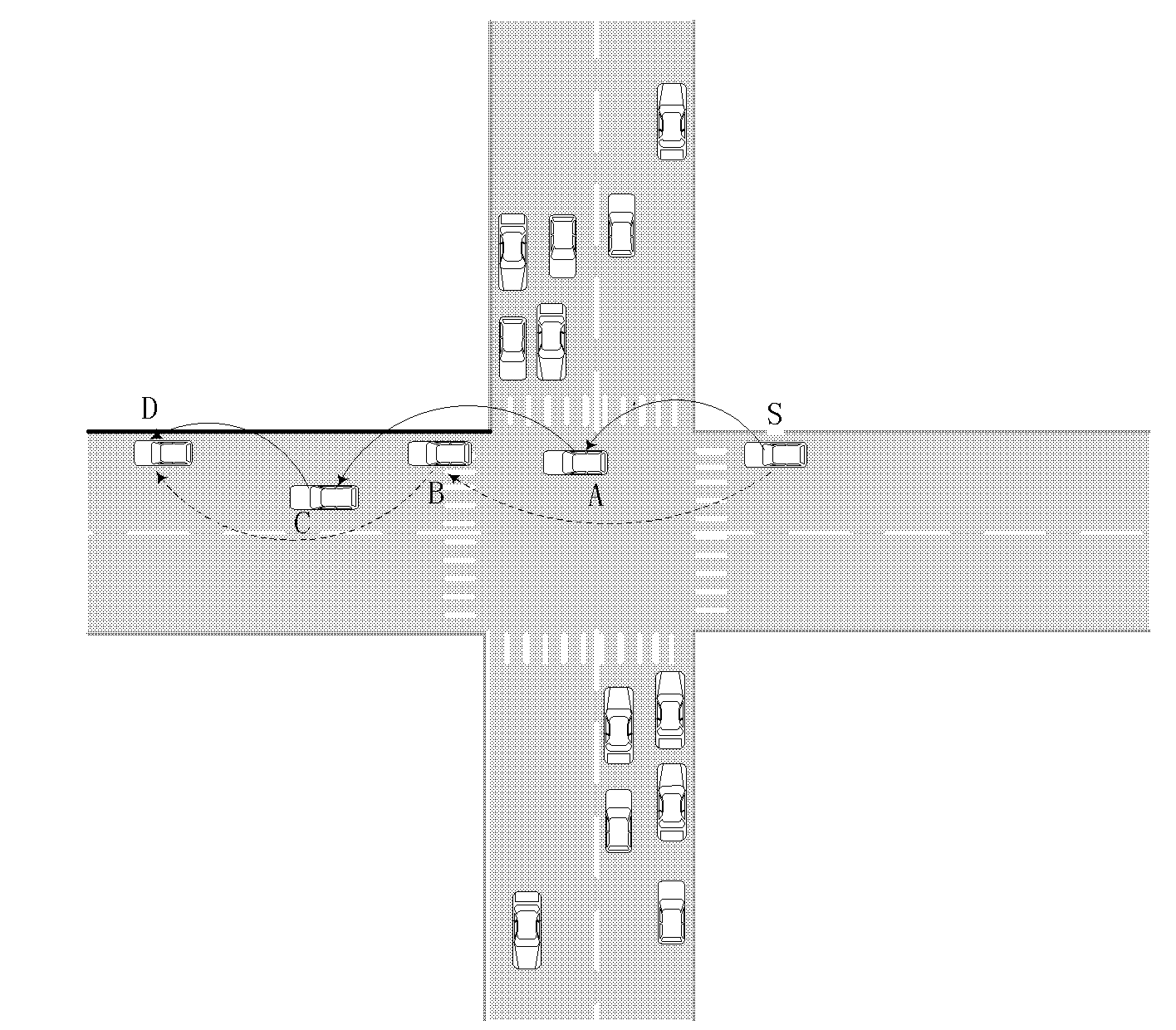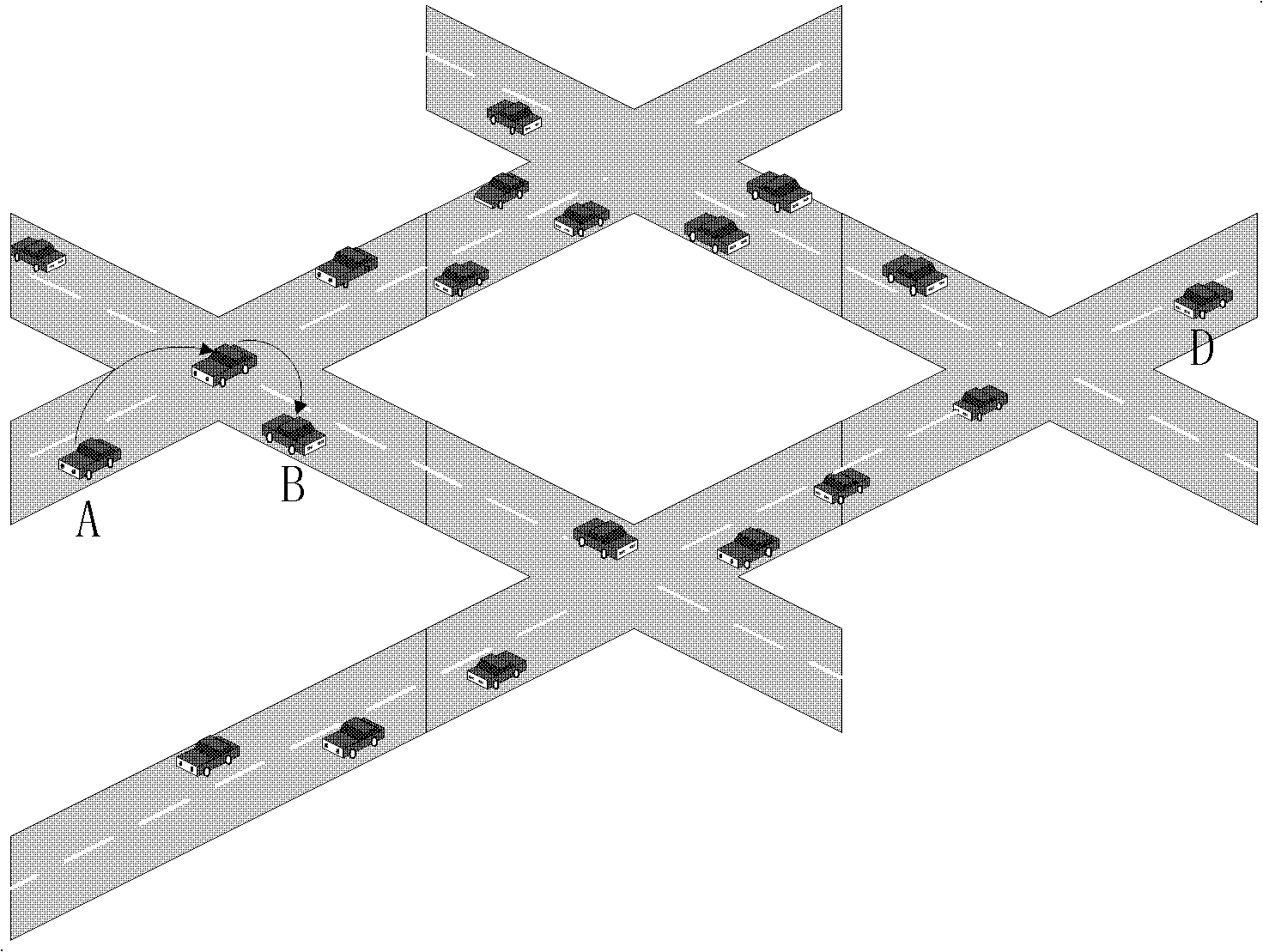Prediction-based routing method at intersection in vehicle self-organizing network
A self-organizing network and intersection technology, which is applied in routing decision-making and routing in the vehicle self-organizing network VANET, can solve the problems of not considering the driving direction of the vehicle, increasing network load, increasing packet transmission delay, etc., to reduce data transmission Delay, network connectivity guarantee, and the effect of reducing the probability of errors
- Summary
- Abstract
- Description
- Claims
- Application Information
AI Technical Summary
Problems solved by technology
Method used
Image
Examples
Embodiment Construction
[0026] Assume that vehicle S wants to send a data packet to reserve a parking space at the parking lot at intersection J4. At the current moment, the packet is transmitted to node A, and the routing decision is made at this time. Its application scenarios are as Figure 5 As shown, it is an overview map of urban traffic. It can be seen from the figure that J1 is the current intersection, and the adjacent intersections are J2, J3 and J5, wherein J2 and J3 are candidate intersections, the road section corresponding to J2 is R2, and the road section corresponding to J3 is R3.
[0027] In this scenario, node B is located at the current intersection, and the specific implementation steps of node A running the routing protocol refer to Figure 4 ,Described as follows:
[0028] Step 1: Construct a Hello group and broadcast it.
[0029] The nodes in the vehicle self-organizing network determine whether they are located at the intersection through GPS positioning technology and the ...
PUM
 Login to View More
Login to View More Abstract
Description
Claims
Application Information
 Login to View More
Login to View More - R&D
- Intellectual Property
- Life Sciences
- Materials
- Tech Scout
- Unparalleled Data Quality
- Higher Quality Content
- 60% Fewer Hallucinations
Browse by: Latest US Patents, China's latest patents, Technical Efficacy Thesaurus, Application Domain, Technology Topic, Popular Technical Reports.
© 2025 PatSnap. All rights reserved.Legal|Privacy policy|Modern Slavery Act Transparency Statement|Sitemap|About US| Contact US: help@patsnap.com



